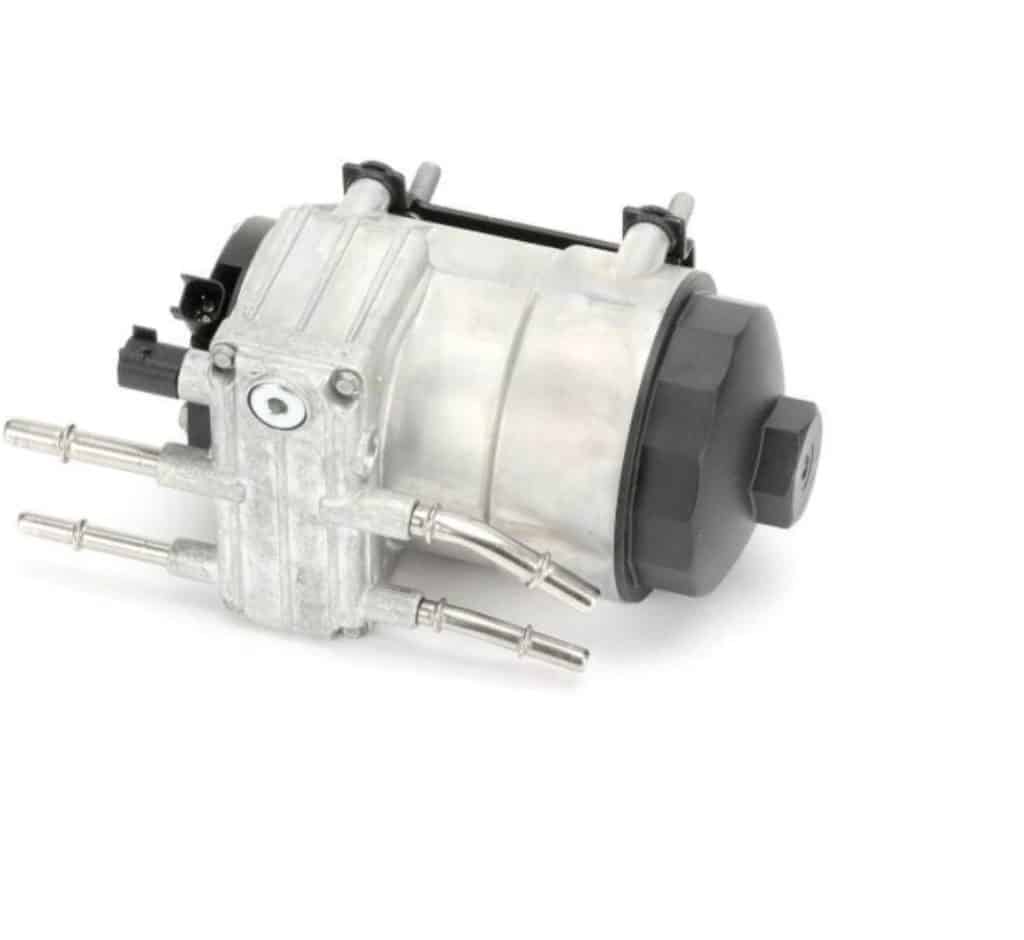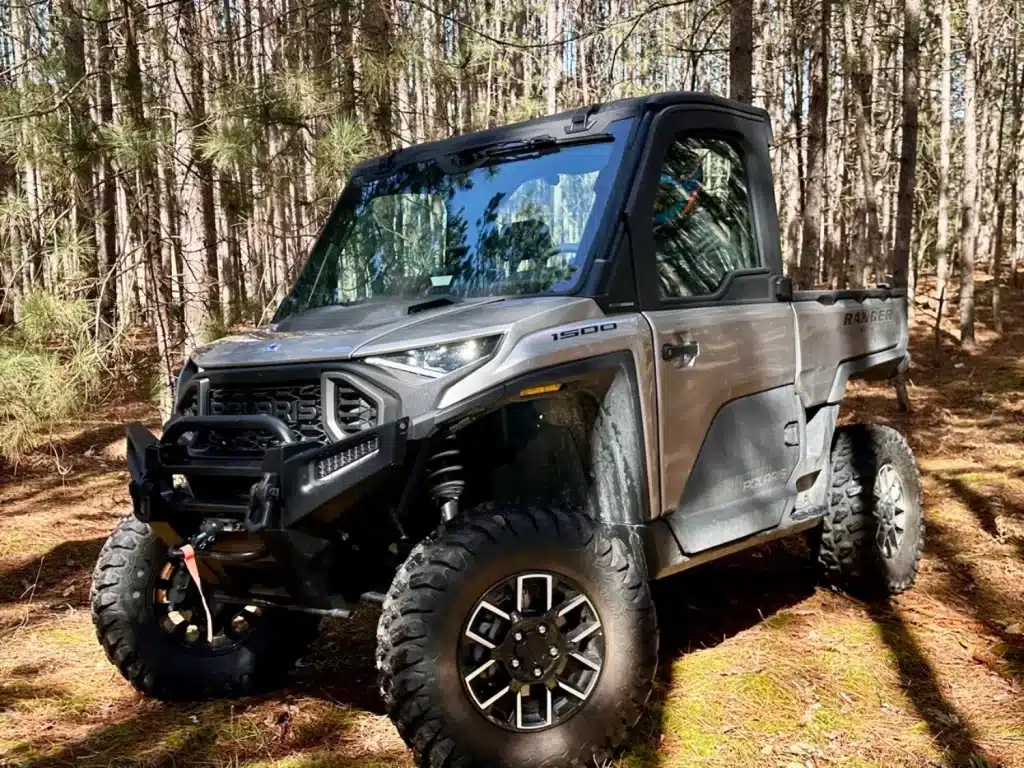It’s a sunny day and you’re hiking in an enchanting spot. The trails are beautiful, and you take breaks at postcard-perfect viewpoints. After a hearty lunch, it’s time to refuel the all-terrain vehicle. You enter the shop to pay. When you look at the bill, your heart stops, you get tunnel vision and you feel your legs want to bend. You’ve just realized that you’ve been putting diesel instead of petrol in your ATV!
Petrol vs Diesel
Before going any further, let’s look at the differences between petrol and diesel. Both are 4-stroke engines, meaning that their operation is broken down into 4 stages:
Stage 1: Intake of air or a mixture of air and gasoline
Stage 2: Compression and explosion
Stage 3: Expansion
Stage 4: Exhaust
Note that in the first stage, for the diesel engine, it’s only air that enters the cylinder, whereas for the gasoline engine, it’s the mixture of air and gasoline.
A diesel engine has no spark plugs, unlike a gasoline engine. Firstly, because diesel is more stable than gasoline. What’s more, self-ignition is lower than gasoline, at 210 degrees Celsius versus 246 to 280 degrees Celsius for gasoline, depending on octane rating. So, diesel just explodes from the heat caused by piston compression. Also, diesel is injected into the cylinder just before the explosion during the compression stage.
At the time of writing, there is no gasoline engine without a spark plug, as the liquid is too volatile and would require a more robust engine. In other words, it doesn’t always explode at the right moment. This can already happen with today’s engines, with gasoline exploding before the spark plug ignites, a phenomenon known as “engine pinging”. This can usually be corrected by using higher octane gasoline.

Consequences of diesel in gasoline engines
Diesel is an oily liquid. For those who don’t know, when we say that the house is heated with oil, it’s actually diesel fuel burning in the furnace. It’s also thicker in consistency than gasoline. As a result, it can clog fuel filters in vehicles equipped with them. It can also clog injectors and spark plugs. As diesel is less explosive than petrol, it can generate a thick white smoke and cause engine chatter.



Consequences of gasoline in the diesel engine
This is a worse situation than diesel in the gasoline engine, and can cause considerable damage. Firstly, gasoline can explode in the engine at any time. What’s more, it can damage both the diesel pump and the injectors. In fact, these 2 critical components use a piston system to send diesel fuel into the engine, and this system needs to be lubricated at all times. As a reminder, diesel has an oily consistency. Gasoline acts as a solvent, destroying any oily residue and causing serious damage.


What to do when diesel fuel has been added to the petrol engine?
Removing diesel fuel
First of all, don’t start your off-road vehicle. The first step is to move it to a safe place. Next, extract all the diesel from the fuel tank, and there are several ways of doing this. The simplest is to use a manual siphon pump. If you don’t have one and/or can’t find one, you’ll have to remove the tank from the vehicle and empty it. As a very last resort, you can use a transparent hose to suck out the diesel and use gravity to extract it. This is an extremely dangerous method, however, and can lead to poisoning and/or pneumonia, as the liquid can easily enter the lungs. It must be extracted so that less than 10% of the liquid remains in the tank.



If you’ve started the ATV and it’s started to produce white smoke, you’ll need to change the spark plugs. If you don’t have any spares, try cleaning them with a solvent, or even gasoline as a last resort. Also, remove or change the fuel filter if the vehicle is fitted with one.
Filling with gasoline
Once the diesel is out, it’s time to fill it up with gasoline, preferably higher octane. In general, this type of gasoline contains more detergents than regular gasoline, helping to clean the entire injection system.
Experiences in the trail
As a guide, I experienced a few situations where one of the participants put diesel instead of petrol in the quad. On one occasion, although the fuel nozzle was clearly marked “diesel” and was green in color, the quad rider used it without realizing it. Unfortunately, he started up and the diesel made its way to the engine, where it began to graze, generating thick white smoke.
We stopped just in front of a residence that already had a siphon pump. We were able to extract all the diesel and clean the candles by burning them with a lighter. Unfortunately, we couldn’t get it to start. He had to go to the nearest garage, and only by changing the spark plugs was he able to start the quad. Either the spark plugs were too dirty with diesel or we hadn’t cleaned them properly.

Another situation with a happier ending this time, two quad riders put diesel in their ATV at a gas station. The diesel gun was not clearly identified. We were a big group and everyone wanted to put petrol in. In the heat of the moment, two quad riders didn’t notice that one out of four guns was diesel.
One started the ATV for less than a minute, while the other didn’t start it at all. We had trouble finding the siphon pump, so we used the transparent hose, into which a few participants volunteered to suck the diesel. The ATV had to be lifted onto its side in order to extract the hard-to-reach liquid from the irregularly shaped tank. Once the liquid had been extracted, they put in premium petrol and the ATVs started up and ran well for the rest of the trip.

Guide hint
Ideally, bring along a small siphon pump that includes a gravity-flow feature. In other words, you pump until the liquid comes out of the pipe, and gravity takes care of the rest. The model with a pump in the middle of two pipes takes up no space, and can even be used to clean clogged radiators near a stretch of water. Transparent pipes are preferable, so you can see the liquid flow better.
Impulse siphon pipes, with a ball at the end, don’t work well in this situation, especially when the tank is irregularly shaped. What’s more, when there’s little diesel left, it’s difficult to get the rest out, as it takes a minimum of liquid to be able to move the hose back and forth to cause extraction.








